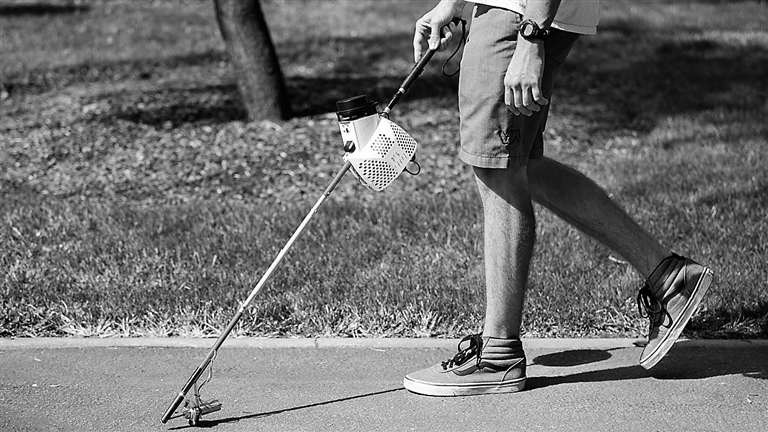
USING tools from autonomous vehicles, a research team in Stanford University in the United States has built an augmented white cane, which helps people detect and identify obstacles, move easily around those objects, and follow routes both indoors and out. The augmented cane is not the first smart cane. Currently available sensor canes are technologically limited, only detecting objects right in front of the user. The new cane sports cutting-edge sensors which can be built at home from off-the-shelf parts, and free, open-source software, and costs US$400. The researchers hope their device will be an affordable and useful option for people with impaired vision. “We wanted something more user-friendly than just a white cane with sensors,” says Patrick Slade, a graduate research assistant in the Stanford University Intelligent Systems Laboratory and first author of the study in the journal Science Robotics. “Something that cannot only tell you there’s an object in your way, but tell you what that object is and then help you navigate around it.” The augmented cane is equipped with a LiDAR sensor. LiDAR is the laser-based technology used in some self-driving cars and aircraft that measures the distance to nearby obstacles. The cane has additional sensors including accelerometers, magnetometers, and gyroscopes, like those on a smartphone, that monitor the user’s position, speed and direction. The cane makes decisions using artificial intelligence-based way finding and robotics algorithms like simultaneous localization and mapping and visual servoing, steering the user toward an object in an image. Mounted at the tip of the cane is the pièce de résistance, a motorized, omnidirectional wheel that maintains contact with the ground. This wheel leads the user with impaired vision by gently tugging and nudging, left and right, around impediments. Equipped with built-in GPS and mapping capabilities, the augmented cane can even guide its user to precise locations, like a favorite store in the mall or a local coffee shop. In real-world tests with users, the researchers put the augmented cane in the hands of people with visual impairments as well as sighted people wearing blindfolds. They were asked to complete everyday navigation challenges: walking hallways, avoiding obstacles and traversing outdoor waypoints. “We want the humans to be in control but provide them with the right level of gentle guidance to get them where they want to go as safely and efficiently as possible,” says senior author Mykel Kochenderfer, an associate professor of aeronautics and astronautics and an expert in aircraft collision-avoidance systems. The augmented cane increased the walking speed for participants with impaired vision by roughly 20 percent over the white cane alone. For sighted people wearing blindfolds, the results were more impressive, increasing their speed by more than a third. An increased walking speed is related to better quality of life, Slade notes, so the hope is that the device could improve the quality of life of its users. The Stanford researchers are open-sourcing every aspect of the project. The paper comes with a downloadable parts list and DIY solder-at-home instructions. “We wanted to optimize this project for ease of replication and cost. Anyone can go and download all the code, bill of materials, and electronic schematics, all for free,” Kochenderfer says. “Significant engineering and experiments are necessary before it is ready for everyday use,” he says, adding that he and the team would welcome partners in industry who could streamline the design and scale up production to make the augmented cane even more affordable. Next steps for the team include refinements to their prototype and developing a model that uses an everyday smartphone as the processor, an advance that could improve functionality, broaden access to the technology, and further drive down costs. (SD-Agencies) | 
